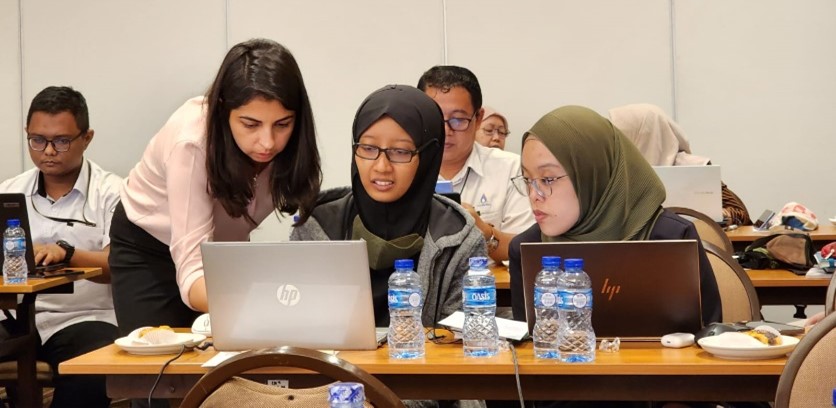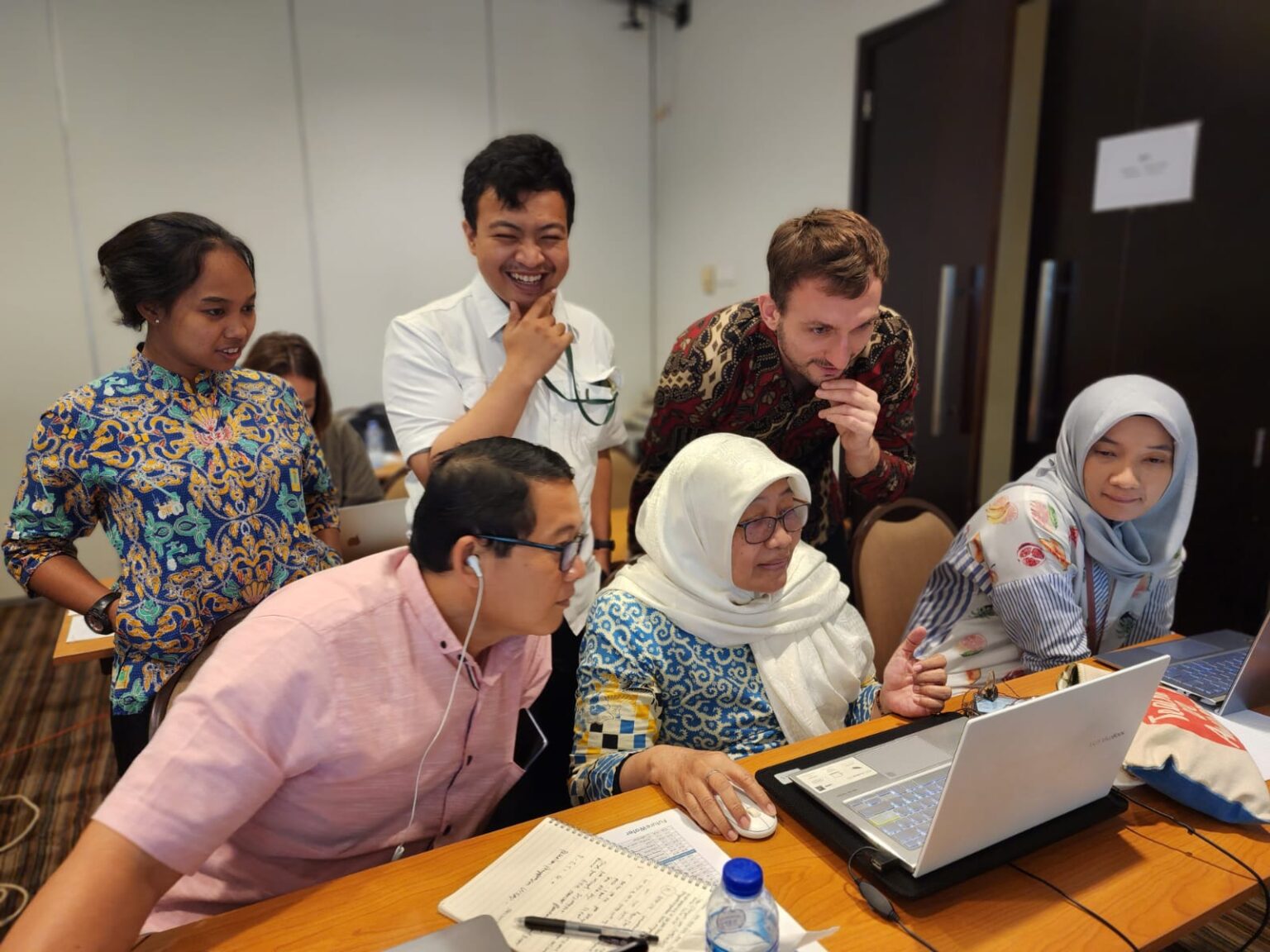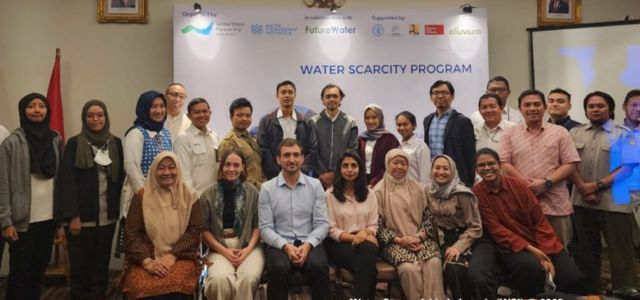Following the first Water Accounting and Allocation training held earlier in August, we successfully had the second in-person training from 4th – 8th December 2023 led by the trainers from FutureWater with the support of the United Nations Food and Agriculture Organization (FAO), Ministry of National Development Planning/Bappenas and Ministry of Public Works and Housing. In total, 25 participants attended the training with one trainee joining online.
Aiming to leverage the capacity to take practical steps to address and manage water scarcity while experiencing rapid population growth under a changing climate, this second Water Accounting and Allocation aimed to develop a water account using a variety of geospatial and water resources modelling tools for the Cimanuk basin as an example.
Day 1 and Day 2 – Tools for Water Accounting and Data Collection and Analysis through Remote Sensing.
Mrs. Titih Titisari, from Directorate General Water Resources Bappenas, officially started the second training with her opening remarks. The training modules covered on the first two days focused on assessing data availability and accessibility in the Cimanuk basin.

Participants learnt how remote sensing can be used for informing water resources management decisions and more specifically, how it can complement the Water Accounting approach. By using Google Earth Engine, participants extracted, processed, and analysed differently remotely sensed datasets to assess precipitation, land use and evapotranspiration for the Cimanuk basin, looking at trends during wet and dry seasons.
Day 3 and Day 4 – Working with the WEAP (Water Evaluation and Planning System) Model and Scenario Assessment using WEAP
Through day three and day four, the trainees learnt the basics of Water Evaluation and Planning System (WEAP) model by using the Cimanuk basin as a case study. The training, consisting of hands-on exercises and group work, allowed participants to update the model by improving different input variables and assessing the impact of different interventions and projections on Water Security in the catchment.

Day 5 – Visit Cimanuk Basin.
On the last day of the training, all trainees and trainers visited the Cimanuk Basin in Cirebon, West Java. Prior to the filed visit, the group was welcomed by the Head of Operational Division of Cimanuk Cisangerung River Basin Organisation (BBWS Cimanuk – Cisanggerung). During the welcoming session, the group had the opportunity to share insights from the Water Scarcity Program (WSP), water accounting training and the group work of the trainees. After the presentation from the groups, the WEAP consultant from BBWS Cimanuk-Cisanggerung presented the regulatory framework and the method of formulating catchment water balance in Cimanuk Cisanggerung basin. (UA).

